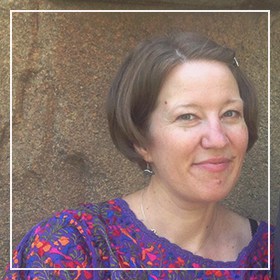The Open-Mic Anthropologist
The first time I performed stand-up comedy was in December 2015, at an open-mic club called On the Rocks. Gripped by nerves, I worried I would trip on the steps leading up to the stage, possibly stumble into the drum set also on the stage, and send it crashing into the audience. Decapitating an innocent bystander with a cymbal would surely be in violation of research ethics. I forgot to move the stand aside after taking the mic and stood behind it the entire performance, but I managed to remember my set, and although my conscious memories of the performance are a bit foggy, I can recall the intense rush of hearing the audience laugh, seeing their smiling faces, and feeling their attention focused on me.
Before attempting stand-up I had reassured myself that it was for the sake of research, that it wouldn’t matter if I was awful. I had not thought about the possibility that I would do well enough to want to keep performing and even develop ambitions of improving. They say you get hooked on doing comedy, the highs of intense connection and sense of being understood when the audience erupts into laughter.
I have been doing ethnographic research in the stand-up comedy scene in Helsinki, Finland, since January 2015 (both a continuation of and departure from my doctoral work on clowning in the Easter ritual of the Yaquis, an indigenous group in Northern Mexico). I had always planned to include some performance in the research, but the prospect was admittedly a little daunting. Although figuring out how I could make someone laugh has always been an important part of social interaction for me, there is a big gap between being funny in a group of friends and getting onstage to make a gathering of strangers laugh, preferably within the first 30 seconds.

Non-comedian friends and colleagues usually commented on how scary the idea sounded, but when I shyly confessed my aims to the comedians I’d met during field work, they were very encouraging and matter-of-fact about it. In the fall of 2015 I found out that stand-up comedy courses were being offered at adult education centers in the Helsinki area. The inclusion of stand-up comedy on the list of courses and the speed at which the courses fill up speaks to the current popularity of this – still fairly new – genre in Finland today. In addition to providing valuable data and the chance to meet more people interested in comedy, taking part in the course gave me the needed confidence to actually start performing in the numerous open-mic clubs of the Helsinki metropolitan area. Since I climbed the steps and took the mic in my hand that first time in December, I have performed a total of 15 times at ten different clubs, in both Finnish and English. Performing has been eye-opening, and the perspective and insights gained from stepping onto the stage have complemented, reinforced, as well as challenged the ideas I had from my previous months of participant-observation at the clubs.
Why Comedy?
In my (admittedly biased) view comedic performance is an extremely fascinating and challenging topic for anthropology. Humor and comedy are an intrinsic part of the human condition. Intuitive, spontaneous, effortless – but also complex, rule-governed, and so very difficult to perform on cue. I feel that an ethnographic and anthropological study of stand-up comedy has a lot to offer – to anthropology, to humor studies, and maybe even to comedy as a practice. I know of anthropologists who have done at least a bit of stand-up comedy (e.g. Keir Martin, who wrote about the topic for a forum on anthropologies of humor I put together for Suomen Antropologi) and of comedians who have studied anthropology (or written theses on comedy for other disciplines), but as far as I know I am the only professional anthropologist studying stand-up comedy through such immersive field work (although Susan Seizer is an anthropologist studying stand-up in the USA, and Robert Lynch, a U.S. biological anthropologist and comedian, has looked at humor and laughter from an evolutionary stand-point).

Academic studies of stand-up (as well as other forms of humor) tend to focus on the performances. As this is only the tip of the proverbial iceberg, learning to perform offers a unique position to discuss what lies beneath the surface. As well as offering insights, becoming an open-mic comedian gives me more organic access to a variety of spaces and a place within the community of comedians beyond the well-accepted semi-outsider I felt I was before adding performance to my field work.
The Anthropology of Comedy
Despite being a marginal topic in comparison to ‘serious’ issues, humor has been studied in a wide array of disciplines. As many studies note, humor is a difficult topic. Found everywhere, yet hard to pin down, easily flattened and ruined by explanations, hard to describe and even more difficult to theorize. For example, humor is supposed to be funny, but for whom? Nothing is funny in itself, but anything can be funny from the right perspective (and just as easily offensive from another).
How do we recognize something is considered funny? Because it causes laughter? Laughter is in itself a big topic, only partly related to humor.
I think that some of these problems of definition can be mitigated by an ethnographically grounded view, asking what – and perhaps more importantly how – humor may potentially do or say in a specific situation, instead of approaching the topic as a general phenomenon. However, there are a few established general theories of humor, which continue to show up in different forms in academic as well as folk models and also in practical guides of how to do stand-up, that deserve a nut-shell description here.

The three classic theories see humor as creating and rising from superiority, release, and incongruity. These could be respectively described as social, functional, and representational. Superiority theory is the oldest of these, claiming that the impulse to laugh or finding something funny comes from a ‘burst of sudden glory’ as Thomas Hobbes put it, where you realize and delight in your superiority in relation to someone else, or a former version of yourself. These ideas are reflected in current claims that ‘comedy is cruelty’, or that ‘comedy always has a target’, ideas that can be found in how-to manuals written for and by comedians.
One of the best-known supporters of the release theory was Sigmund Freud: laughter comes from the release of pent up psychic tension. The idea is that we laugh at things that worry us, there is a liberation in laughter, and humor thus provides a way to cope with difficult issues. This theory is exemplified in the concept of ‘comic relief’. While the first two focus on the causes and effects of humor and present rather clear-cut views, the third theory concerns the form of humor; incongruity theory claims that humor is based on the combination of contradictory or otherwise incongruent elements brought together, creating a sort of cognitive puzzle. As this view is more descriptive, it leaves room for ambiguity of meaning and effect but also opens up further questions of why certain incongruities provide comic fodder in a given situation.
The problems with views that would reduce all humor to any one cause or function is that it is easy to find exceptions that do not conform. Humor tends to resist reductive analyses – which makes it a challenging but also very interesting topic of study from a theoretical as well as ethnographic point of view.
A more implicit problem lurks under the surface of theorizing humor: the comedic is seen as an exception to straightforward congruity, the serious and rational, which is taken as the unmarked normal foundation – and often explicitly or implicitly more important than the comedic. My hope is to develop a new way of thinking about the semiotics of comedy and in the process offer new perspectives on non-comedic forms as well. I will come back to this at the end of the paper.
Stand-up in Helsinki

Stand-up comedy is still a relatively new phenomenon in Finland. Despite a rich tradition of various forms of folk humor and comedic theater, the first steps of Finnish stand-up in the 1990s were met with resistance and claims that this foreign import would never work here, being unsuitable to the language and culture. However, for a comedic form, being in violation of cultural norms can be part of its draw. Let’s say that generally Finnish linguistic ideology (cultural ideas about the appropriate uses, forms, and aims of language) values silence, listening, and the idea that speech entails responsibility due to its importance. Against this idea, the notion that anyone can get up on stage to say whatever they want, with no guarantees of an important message, no props or an obvious skill like singing or playing an instrument, gambling on their ability to make the audience laugh, is pretty revolutionary. (I suggest that this gamble is what gives stand-up ‘high emotional stakes’ for both performers and audiences.)
In any case, the genre has solidified its position. Helsinki has a thriving comedy scene, and there are active comedians on every level, from amateur ‘open-mic’ comedians to internationally established professionals. Stand-up comedy is becoming more known through television shows and other media as well. As the genre is becoming better known and more popular, Finnish stand-up is also becoming more diverse. Clubs have developed their own distinctive profiles. Although Helsinki has the most clubs, other cities have their own, and many comedians travel around the country to do open-mic spots early on in their careers. It also seems to me – and this is echoed by my interlocutors as well – that topics are becoming more personal and more political, as more comedians enter the ranks, developing individual styles.
When I started my tentative forays into the world of Finnish comedy, I was struck by how warmly the comedians welcomed me and met my plans to do research with support and encouragement. I was impressed by the tight-knit community and country-wide networks I found, undermining any ideas I might have had of the comedian as an individualist loner, working alone on his/her material.
I have mainly spent time in the so-called open-mic scene, where developing comedians learn the craft and more established ones try out new material. Some clubs are free-entry, others charge 3-10 euros for tickets. The open-mic scene is a part of stand-up everywhere, but Finland is good for the aspirational comedian in that the clubs feature ‘real’ audiences and performance is often rewarded with food, drink, and in some cases a bit of cash. In comparison, comedians in New York City often have to pay a few dollars for an open-mic spot, and the audience may consist only of other comedians waiting to perform – a tough crowd.

Given the nature of stand-up comedy, support and encouragement are very welcome – if a good gig feels amazing, bombing (in Finnish they call it dying on stage) feels awful. Becoming a comedian is a long, hard, and unpredictable road. One of the difficulties is that in contrast to other Western performing arts, stand-up cannot really be rehearsed – the majority of learning and developing of material takes place on stage in front of an audience (hence the importance of open-mic). Finnish comedian Jukka Lindström has pointed out that this applies to clowning as well – live performance humor requires a performance situation to reveal its potential. This potential may also exceed what can be captured in writing – Lindström has also talked about how comedy allows you to somehow communicate that perfect idea that you have in your head but can’t quite capture in writing. Although you can never be entirely sure what idea each audience member has in their head, the collective eruption of laughter – and the feel of the energy in the room – tells you that they understood you.

Many of the comedians I know do around a hundred gigs a year, and it takes several years and hundreds of gigs to become a professional. It is said that first it takes a few years to learn to be funny, then you start finding your voice and spend another few years learning how to talk about what you really want to talk about in your comedy. In addition to the indispensable performance experience, there is a lot of writing and preparation involved. I would estimate that in terms of work, writing one bit (joke) is comparable to writing an abstract for a paper, 5-10 minutes of comedy is like writing a research article, and an hour of material is about the same as writing a monograph.
While comedy writing is in many ways a very individual and personal endeavor, comedians also can and do ask for feedback from others. While many stand-up comedians aim to present an air of spontaneity, as if they were making up their bits right then and there, comedy as a performance form requires so much condensation that the illusion of improvisation requires a lot of effort, whether in the form of hours spent writing and perfecting the material or in hours spent onstage gaining performance experience.
Conclusions: The comedy of anthropology
In my doctoral as well as current research, I draw extensively on the theories of Roy Wagner. I have applied his model of culture as the interplay of established convention and invention that extends and possibly changes these conventions, as well as the idea of figure-ground reversal, to show how comedic performance plays with figures and grounds.
Comedy cannot be created or understood without the ability to endure, and even delight in, paradox and contradictory ideas. Thus theories that work in a similar fashion – creating a dialectic of opposites – offer a promise of analyzing comedy in a way that shows how it’s anchored to its cultural and social contexts, yet also efficacious, creative, and potentially transformative in relation to those contexts.
One way I have attempted to do this is by analyzing the patterns of convention and invention in different examples of comedy. I have also considered the semiotic techniques involved—how comedians work towards their goal of ‘making people laugh’, embodying certain positions, orientations, and intentions in relation to semiotic ideologies. These wider cultural ideas about the appropriate forms and potential uses of signs may explicitly allow, expect, or forbid humor in different spaces, moments, or forms. At the same time, it is not possible to draw a clear line between ‘humorous’ and ‘serious’ things, meanings, or perspectives. Taking the view that human beings invent their worlds, in the sense that advanced use of signs is what defines the human condition, and groups and individuals negotiate and improvise their ways through those worlds, it is crucial for anthropology to pay attention to creativity and imagination. Why not, then, take comedy as the starting point?
Recent publications on Humor:
Paul Bouissac (2015) The Semiotics of Clowns and Clowning: Rituals of Transgressions and the Theory of Laughter
Susanne Colleary (2015) Performance and Identity in Irish Stand-Up Comedy: The Comic ‘i’
Rebecca Krefting (2014) All Joking Aside: American Humor and its Discontents
Kliph Nesterhoff (2015) The Comedians: Drunks, Thieves, Scoundrels and the History of American Comedy
The Primer of Humor Research (ed. Victor Raskin 2008)
Huumorin skaalat: esitys, tyyli, tarkoitus – Kalevala seuran vuosikirja 2015 (Toim. Seppo Knuuttila, Pekka Hakamies ja Elina Lampela)
Forum: Anthropologies of Humor. (ed. Marianna Keisalo) Suomen Antropologi 4/2014.
Journals:
International Journal of Humor Research
European Journal of Humor Research
Marianna Keisalo
Forthcoming in 2016: Picking People to Hate: Reversible Reversals in Stand-up Comedy. Suomen Antropologi: Journal of the Finnish Anthropological Society.
2015. Koomisen mahdin kosmologiat: antropologinen näkökulma komiikan semiotiikkaan (Cosmologies of Comedic Power: An Anthropological Perspective into the Semiotics of Comedy). In: Huumorin skaalat. Esitys, tyyli, tarkoitus (The scales of Humor. Performance, style, meaning). Yearbook of the Kalevala Society (94). Eds. Seppo Knuuttila, Pekka Hakamies and Elina Lampela.
2014. Humor in its own right? Introduction to Forum: Anthropologies of Humor. Suomen Antropologi: Journal of the Finnish Anthropological Society 4/2014: 40–44.
2014. Cosmologies of Comedic Power: A Little Invention Goes a Long Way. Forum: Anthropologies of Humor. Suomen Antropologi: Journal of the Finnish Anthropological Society 4/2014: 60–64.
2011. Cosmic Clowns: Convention, Invention, and Inversion in the Yaqui Easter Ritual. Doctoral dissertation. University of Helsinki.
Digitally available online on E-thesis http://urn.fi/URN:ISBN:978-952-10-7123-2
Featured image by Donnie Ray Jones (flickr, CC BY 2.0)






Hey Marianna! Here is a shout out from another anthropologist doing stand-up ethnography, in my case in the U.S., mostly in the local mic scene in a mid-sized American city. Your article provoked a kind of uncanny reaction–the, oh yeah, don’t I know response. I have performed at open mics, written and re-written dozens of bits, and know what you mean by a “tough crowd” (i.e. an audience full of comics waiting for their turn at the mic–often comics who have heard twenty versions of an evolving routine). This is a second area of research for me–my primary area is military/veteran cultures, though I’m just finishing up a cross-over piece on military humor, that took took up as a counterpoint. I’ll look for your stuff!
Hi Steven! Thanks for the shout out, very interesting to hear that there are others out there 🙂 I would also be interested in reading your work – I’m also on academia.edu